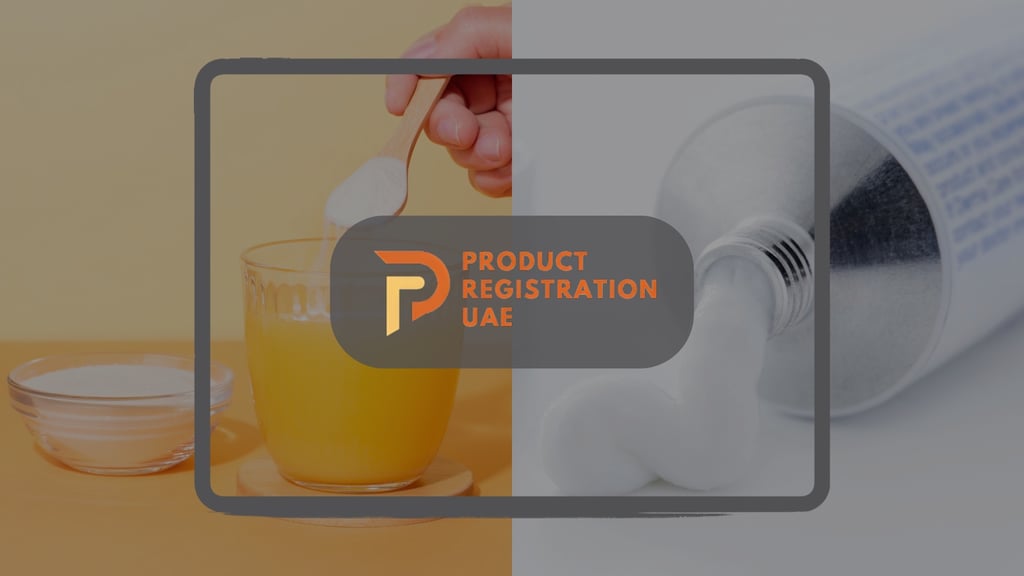Hybrid Product Classification UAE
Learn how UAE handles hybrid product classification. Avoid missteps in multi-category approvals with expert guidance on claims, labeling, and documentation.
7/29/20253 min read


How UAE Treats Multi-Category Products: Hybrid Classification Explained
In today’s evolving product landscape, many innovative brands are launching items that don’t fit neatly into a single category.
A vitamin-infused skincare cream, a functional energy drink with herbal extracts, or a topical gel with therapeutic claims — these products blur the lines between traditional regulatory classifications.
In the UAE, this creates a critical challenge: How do authorities classify and approve hybrid or multi-category products?
If your product mixes elements of cosmetics, supplements, food, or even therapeutic benefits, understanding hybrid classification is essential for avoiding costly rejections, reclassifications, or legal delays.
What Are Hybrid or Multi-Category Products?
Hybrid (or borderline) products combine characteristics of two or more regulatory categories.
For example:
A collagen drink that claims skin hydration (Food + Cosmetic)
A herbal supplement that supports joint function but is applied topically (Supplement + Therapeutic)
A functional beverage containing caffeine and botanical extracts with mood support claims (Food + Supplement)
A topical lotion with active ingredients typically used in medicine (Cosmetic + Pharmaceutical)
In the UAE, such products are not uncommon — but they require special attention to classification, documentation, and claim justification.
Why Classification Matters So Much in the UAE
UAE regulatory authorities — including MOHAP, Dubai Municipality, ESMA, ADAFSA, and SFDA (for region-wide imports) — rely heavily on initial classification to determine:
Which authority will handle your registration
What documents are required
Whether clinical trials or technical data must be provided
Which claims and labeling formats are allowed
If you misclassify your product, it could:
Be submitted to the wrong ministry
Require a complete dossier rework
Trigger delays or rejections
Lead to your product being blocked at customs
How UAE Authorities Assess Multi-Category Products
UAE regulators typically assess hybrid products using a dominant function approach, asking:
What is the product’s primary intended use?
How is the product administered (oral, topical, etc.)?
Are the claims therapeutic, cosmetic, nutritional, or preventative?
What type of ingredients does the formula include?
What’s the form factor — capsule, lotion, powder, drink?
Based on this analysis, they will decide the dominant category — and assign your product to the relevant approval pathway.
If there’s any ambiguity, they may request:
Product samples
Scientific literature supporting claims or ingredient use
Clear statement of intended purpose from the manufacturer
In some cases, products are split into two SKUs: one classified and approved under each category (e.g., one as a supplement and another as a cosmetic).
What Makes Hybrid Products So Risky in Registration
Overlapping Claims: A product might include both cosmetic and therapeutic benefits — but making therapeutic claims on a cosmetic label can lead to rejection.
Conflicting Regulations: Each product category has different rules for labeling, language, ingredients, and supporting documentation.
Extra Scrutiny: Borderline products are flagged more frequently by UAE portals and may face additional review.
Customs Delays: If a product’s classification doesn’t match its label or shipment description, customs clearance may be delayed or denied.
How to Navigate Hybrid Product Registration Successfully
✅ Start with Regulatory Feasibility: Have a UAE compliance expert assess your product before submission. A few hours of research can save months of rework.
✅ Clarify Your Primary Function: Don’t try to be everything. Pick the most dominant category and tailor your dossier accordingly.
✅ Use Only Permissible Claims: Avoid over-promising. Don’t include therapeutic or preventive claims unless you’re following pharmaceutical protocols.
✅ Label According to Dominant Category: Follow layout, font size, Arabic translation, and warnings that match your assigned product type.
✅ Get Support from Regulatory Consultants: Especially with MOHAP or ESMA, you’ll need exact formatting, classification justification, and ministry-specific phrasing.
Real Example: Functional Drink Rejected, Then Approved
A client recently submitted a botanical-infused energy drink with claims like “relieves stress and sharpens focus.” It was flagged as a borderline product.
MOHAP requested:
Ingredient list validation
Claim justification with studies
Removal of therapeutic phrases
Classification submission to ADAFSA as a food product
After adjustments, the product was approved — but only after two months lost due to incorrect initial classification.
FAQs About Hybrid Classification
"Can I choose my own classification?"
Not exactly. You can propose a classification, but UAE authorities will assess and confirm it.
"What if I want the product registered in multiple categories?"
That often requires splitting the product or adjusting formulation/claims per category.
"Do hybrid products need extra documentation?"
Yes — especially around claims, ingredient usage, and proof of intended function.
Final Thoughts: Clarity Wins Approval
When it comes to multi-category products in the UAE, clarity is compliance.
The more precise you are about your product’s purpose, classification, and label — the smoother your approval process.
Need help classifying a hybrid or borderline product?
Start a chat in the bottom right corner or fill out the consultation form here— we’ll guide you before you risk rejection.
Related Blogs to Explore:
Understand documentation rules in What Documents Do You Need for UAE Product Registration?
Learn how small label issues cause delays in What UAE Authorities Check on Supplement Labels
Discover how product type affects your approval route in How to Classify Supplements Correctly in UAE
Catch issues early — see how regulatory pre-screening in the UAE speeds up your approval.


